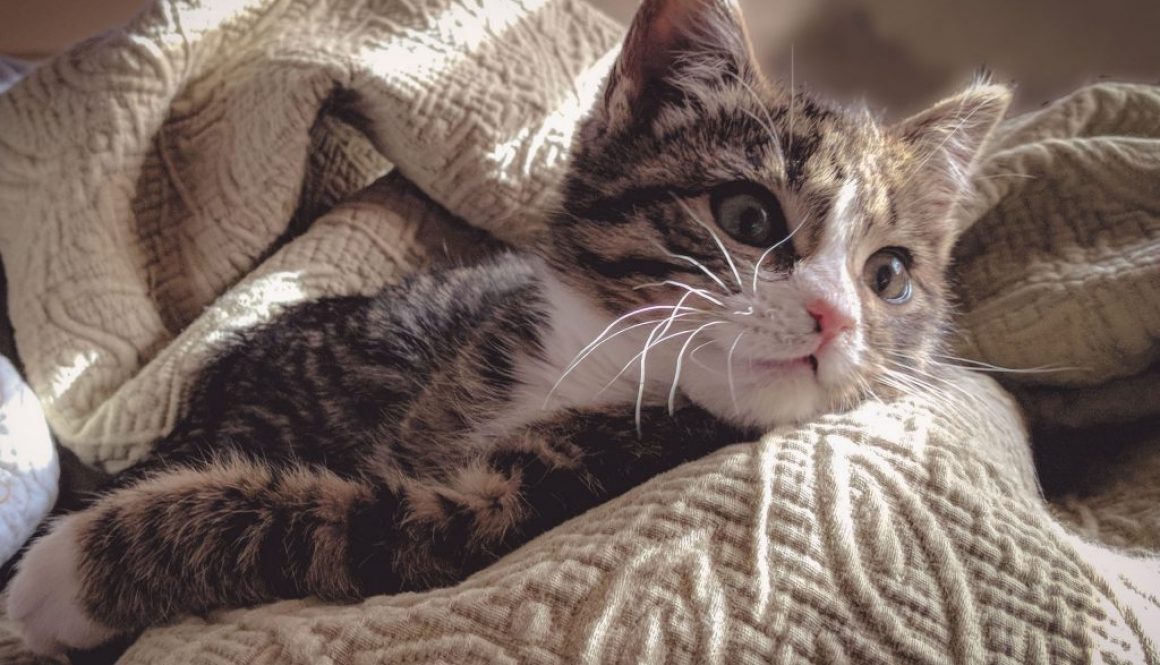How To Keep Your Cat Safe During Winter
It’s that time of the year again, the clocks have gone back, families are getting together to celebrate the holidays and our feline friends are enjoying some cosy evenings by the fire.
As winter draws in and the nights are getting darker, it is more important than ever to put measures in place that can help keep your cat stay safe. Today we want to share one of the easiest yet most overlooked ways that you can help keep your cat safe not only during winter, but also all year round.
Microchipping – What Is It and Should You Be Doing It?
According to the People’s Dispensary for Sick Animals (PDSA), cats come out on top as the UK’s most favourable pet, with an impressive 25% of the population owning one! This is a whopping 11.1 million pet cats in the UK alone, compared to just 8.9 million pet dogs. Despite the figures, cats are yet to have any laws in place to protect them, meaning that if they go missing and have no microchip, there is very little that can be done.
With the laws around microchipping dogs changing, requiring every dog to be microchipped, we are hopeful that a similar law will soon follow for cats. However, in the meantime we must take measures into our own hands to do the best for our furry friends. So, here is what you need to know about microchipping your cat.
- Microchipping is simply a way of putting an identification tag on your pet. In this case, if your cat was to go missing and it had an up to date microchip, it could be scanned once found, and it would bring up your contact details so that you could be contacted and reunited with your pet.
- Microchipping is not a tracking device: Many people believe that a microchip serves as a way to track your pets, however this is not the case and microchips do not have any form of GPS in them.
- The process of microchipping your pet can cause momentary pain or discomfort, which is over quickly and does not continue after the event. It is a chip the size of a grain of rice, placed under the skin, usually in between the shoulder blades.
- Keeping your microchip up to date is vital: if you do not update your address and/or contact number when it changes, these details will be rendered useless in case of emergency when your cat is lost or hurt. Checking and maintaining those details regularly will ensure that if your cat goes missing or is in an accident you will be made aware as soon as it is found.
There are of course a number of other things you can do to keep your cat safer during the winter, such as keeping them inside during the night where they are more likely to go seeking warmth, providing lots of toys, litter trays and food and water to keep them happy indoors and keep them returning home, and of course playing with them to prevent boredom setting in! However, by far the best thing you can do is to get your cat microchipped, as this can be the most effective way of ensuring they return back to you if they have strayed too far.
What To Do If You Suspect A Cat Is A Stray?
Cats can be fiercely independent, and those who have access to the outdoors can stray far from home in search of food, shelter and even just a bit of adventure! For those cats that stray too far and become lost, it can become incredibly difficult, and this happens more often than you’d expect.
- Statistics show that around 100,000 cats go missing each year, and of these only 45% are reunited with their families. This compares to 75% of missing dogs, which are found and safely returned home thanks to new microchipping laws.
If you see a cat you suspect is a stray, consider the following:
- Is it healthy and clean?
- Does it come and go?
If the answer is YES, then the cat is unlikely to be a stray; so leaving it alone is the best thing to do.
If it unwell looking and/or showing signs of malnutrition or injury, then take it to your local vets, or rescue shelter where it can be treated and scanned for a microchip.
Always be sure to ask for a cat to be microchipped, don’t just assume that it will be done.
If you do suspect a cat is a stray, you can put on a paper collar with your phone number, and a request to contact you if this is your cat.
Carla Lane’s Work With Cats
We have been taking in stray cats for decades, and have a great deal of knowledge around what to look for when it comes to a stray cat vs. a cat that has gone on adventure! Cats are pretty cheeky characters, so it is not out of the ordinary for one to nip to numerous houses for a snack and a snuggle before returning home at the end of the day.
However, we have been contacted many times by concerned members of the public who have found what they believe to be a stray cat, and it is so often the case that these cats have a loving home, and have simply decided to take a trip a few blocks down for a snack.
Taking into consideration the points mentioned above can really help those who are concerned about a particular cat decipher its status, as we can only take in cats who really need the help.
Other local charities such as Scouse Pets, Harvey’s Army and Dogslost will be happy to share missing and found cat posters, and some will even come out to scan a found cat whether it is deceased or alive in order to quickly reunite it with its owners.
Cat welfare is a huge issue still, despite the cost of something like a microchip being extremely low and in some cases even free of charge. However, if we can help promote the benefits of microchipping cats, then we are doing our best to help keep cats where they should be during winter – at home with their families!




